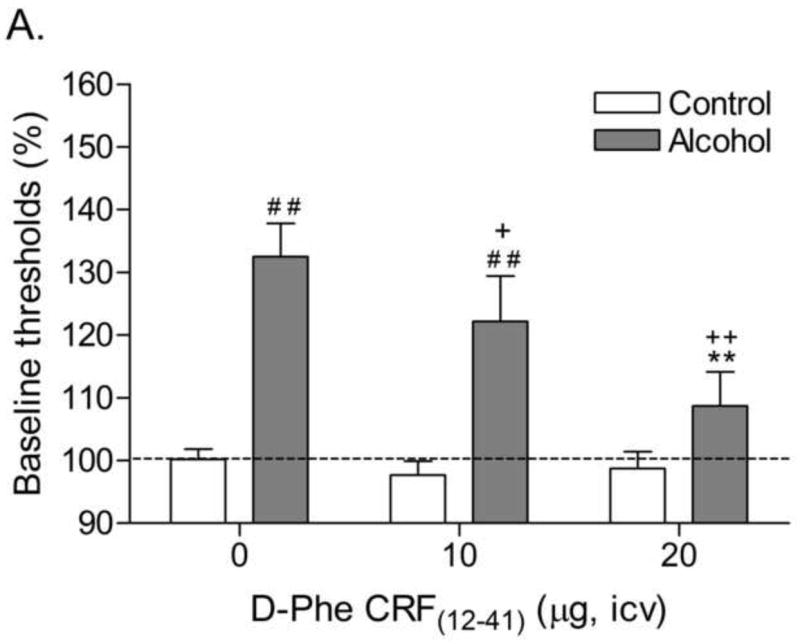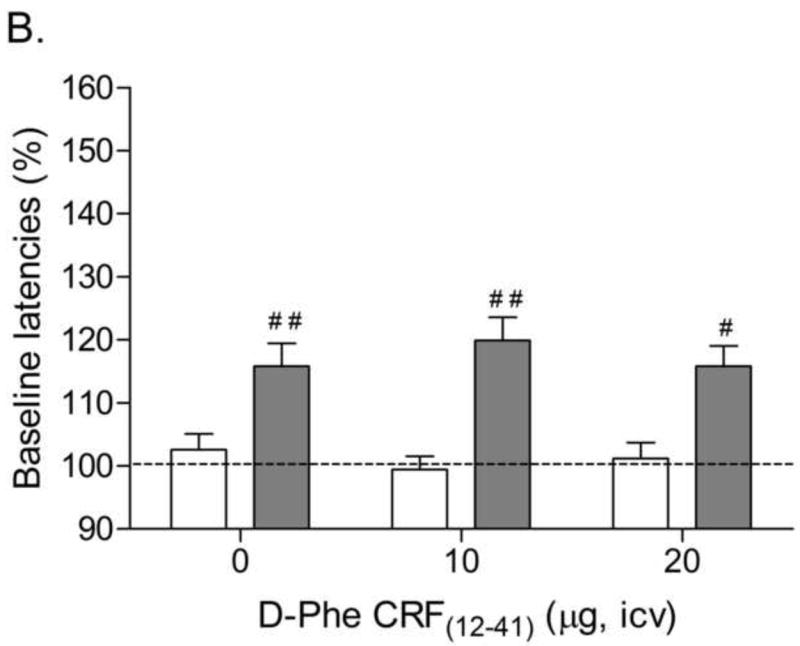Fig. 2.


Effect of the CRF receptor antagonist D-Phe CRF(12-41) (control, n = 20; alcohol, n = 16) on the elevations in brain reward thresholds (A) and increased response latencies (B) associated with alcohol withdrawal. Brain reward thresholds and response latencies are expressed as a percentage of the pretest day values. Crosses (# P<0.05, ## P<0.01) indicate elevations in brain reward thresholds or increased response latencies compared to those of the corresponding control group. Plus signs (+ P<0.05, ++ P<0.01) indicate lower brain reward thresholds compared to those of rats withdrawing from alcohol and acutely treated with vehicle. Asterisks (** P<0.01) indicate lower brain reward thresholds compared to those of rats withdrawing from alcohol and acutely treated with 10 μg of D-Phe CRF(12-41).
